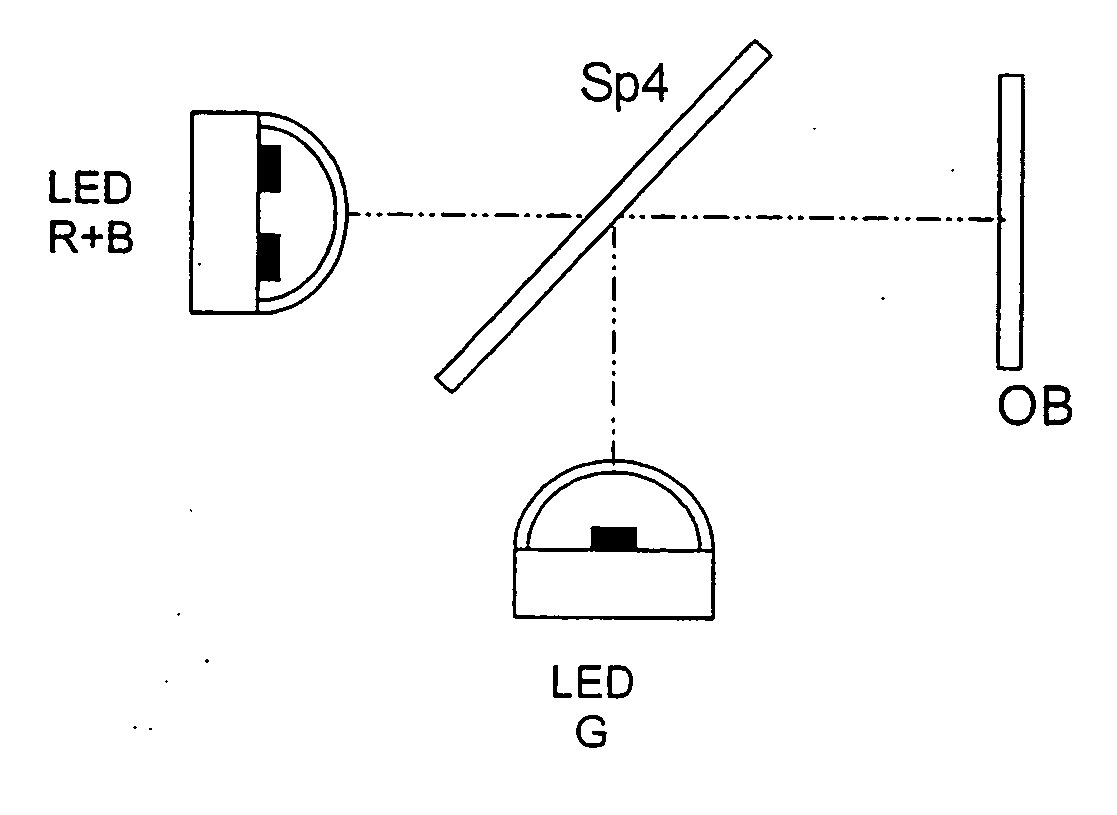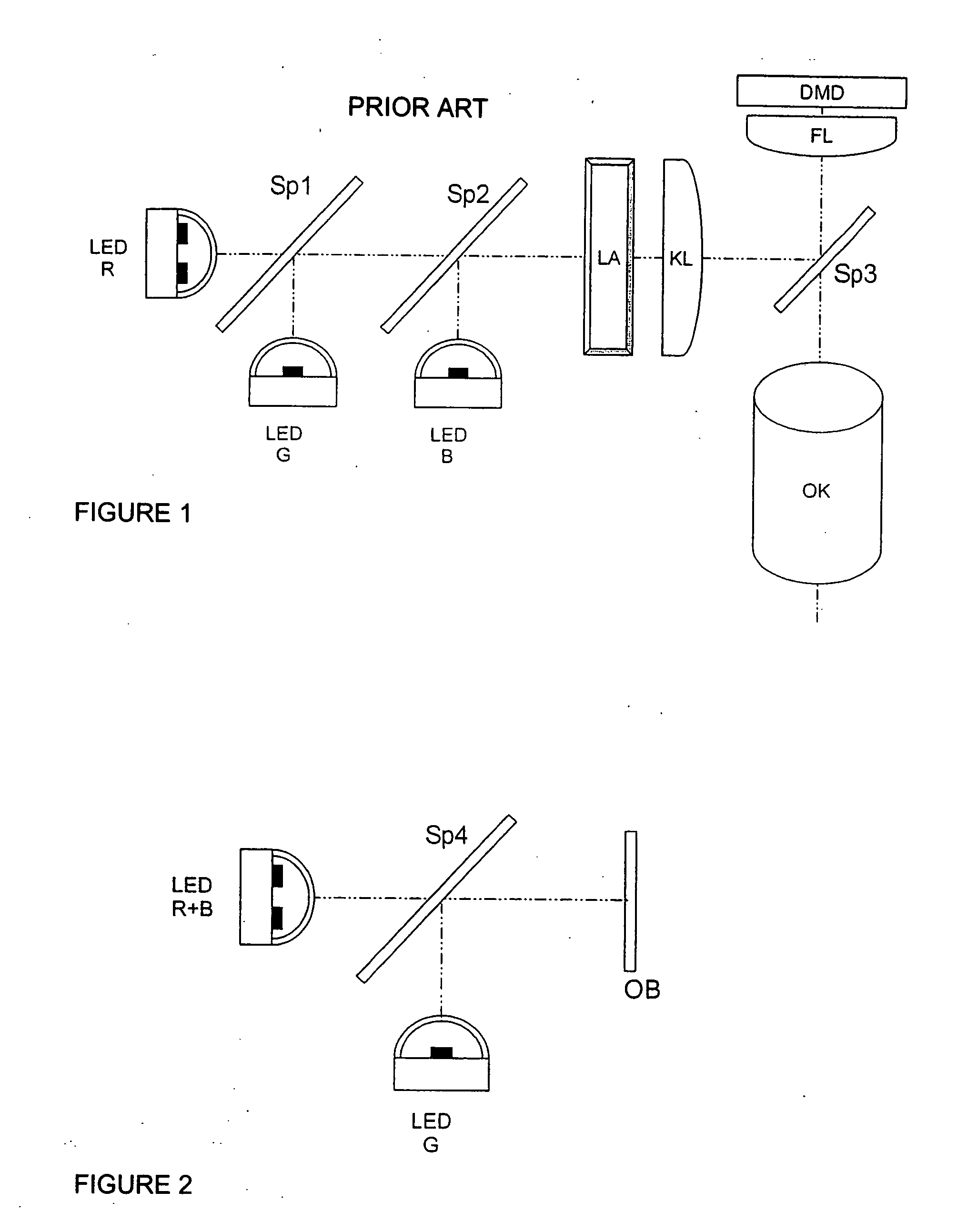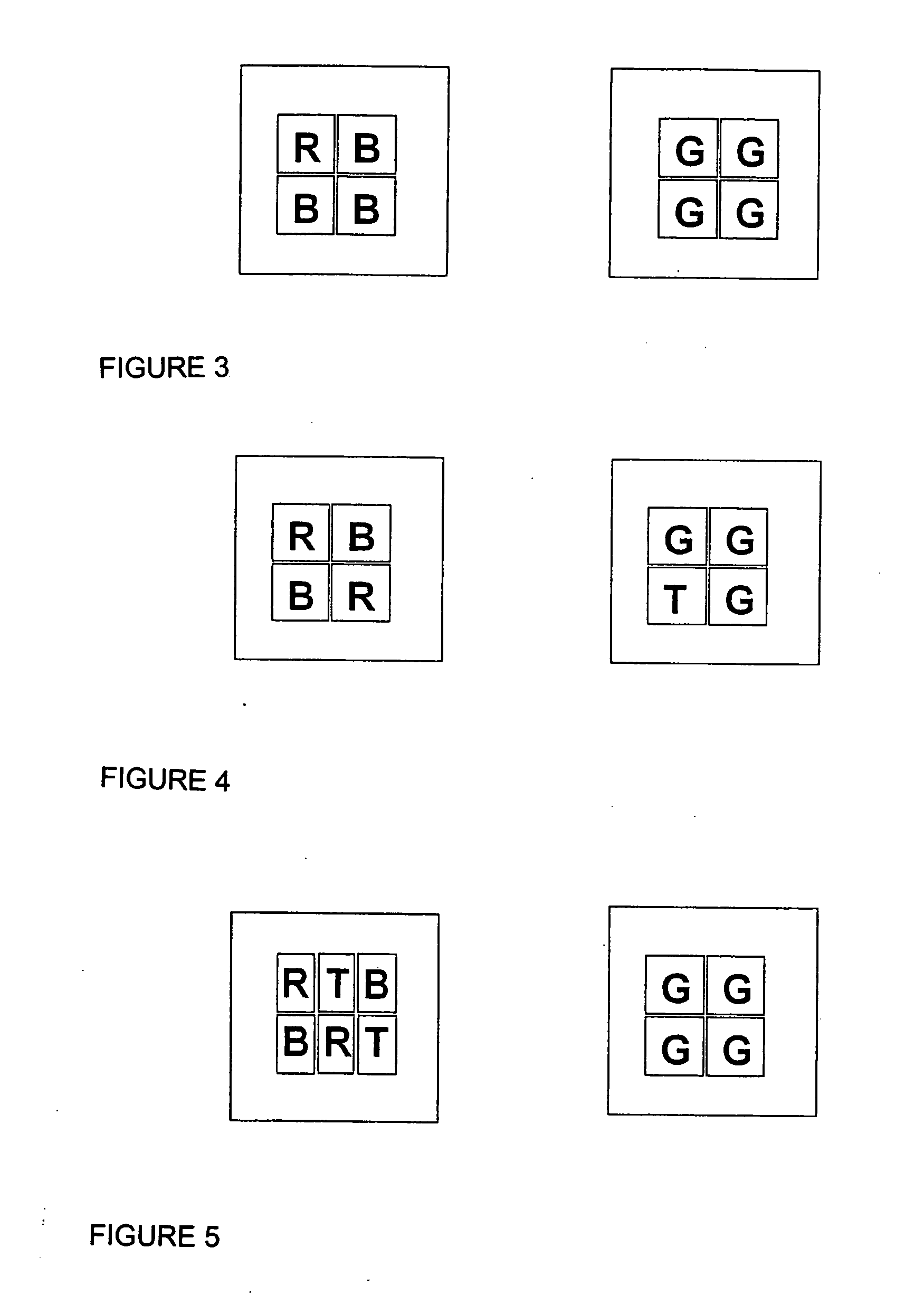Array for the illumination of an object
a technology for objects and arrays, applied in lighting and heating apparatus, lasers, projectors, etc., can solve the problems of less performance than achieved, disadvantageously different distances from sources, and series connections that require a greater installation space, so as to achieve better bundling efficiency
- Summary
- Abstract
- Description
- Claims
- Application Information
AI Technical Summary
Benefits of technology
Problems solved by technology
Method used
Image
Examples
Embodiment Construction
[0030]FIG. 1 shows an array for illumination based on the example of a project having a DMD matrix, as was initially described as the state of the art.
[0031]FIG. 2 shows a two-dimensional array of individual emitters, which, in the example, are divided into two LED modules, LED R+B and LED G, the emitted light components of which are spatially superimposed through a dichroitic beam splitter Sp4. The superimposed light components are used to illuminate an object OB.
[0032] A first LED module LED R+B contains three individual emitters for the color blue and one individual emitter for the color red. A second LED module LED G contains four individual emitters for the color green (see FIG. 3). An example of the output ratios of currently available LEDs for red: green: blue is 6:1:2. Green is the limiting color channel. While retaining the balanced output performance for generating white light, three blue emitters and one red emitter are used in one module. This results in two LED module...
PUM
 Login to View More
Login to View More Abstract
Description
Claims
Application Information
 Login to View More
Login to View More - R&D
- Intellectual Property
- Life Sciences
- Materials
- Tech Scout
- Unparalleled Data Quality
- Higher Quality Content
- 60% Fewer Hallucinations
Browse by: Latest US Patents, China's latest patents, Technical Efficacy Thesaurus, Application Domain, Technology Topic, Popular Technical Reports.
© 2025 PatSnap. All rights reserved.Legal|Privacy policy|Modern Slavery Act Transparency Statement|Sitemap|About US| Contact US: help@patsnap.com



